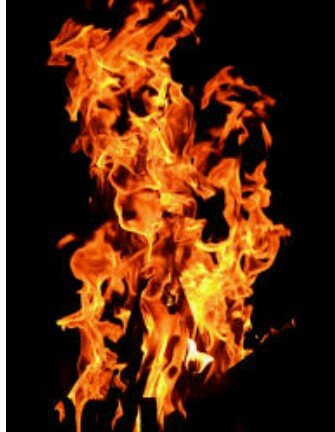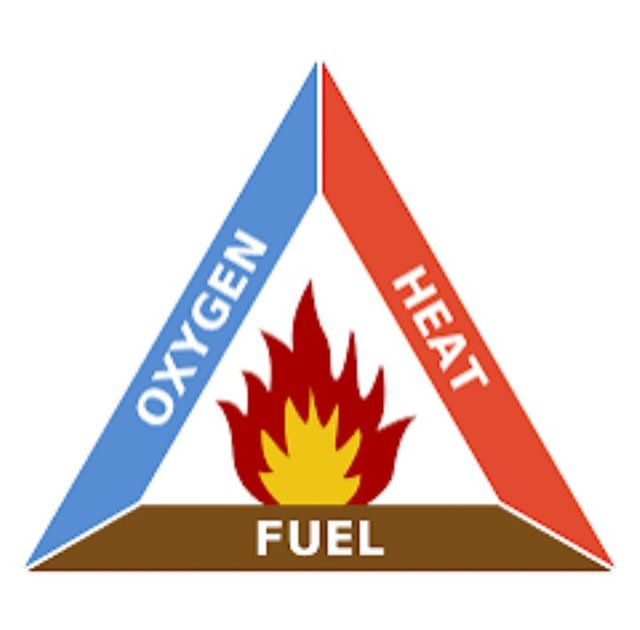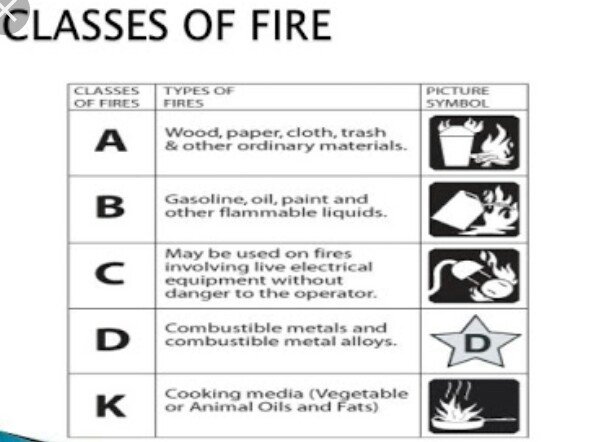CONTENDING WITH THE ROARING FLAMES

Hey Steemians! So two days ago I almost lost my life because of a fire outbreak, quite scary! The house was enveloped with smoke, it was choking and blinding. The fire was actually caused by some electrical fault. At the end of it all the fire was extinguished with sand(couldn't use water because it was electrical).
So today I decided to enlighten us all on fire accidents,how to control them and stay safe while waiting for the fire service (in serious cases).
Fire is the rapid oxidation of a material in the exothermic chemical process of combustion,releasing heat and light. So basically, fire occurs when a flammable or combustible material, in combination with a sufficient amount of an oxidizer (oxygen gas) or any other oxygen-rich compound is exposed to a source of heat or ambient temperature above the flash point for the fuel/oxidizer mix, and be able to sustain a rate of rapid oxidation that produces a chain reaction.
That whole paragraph makes fire look like something too big to understand but simply put,fire occurs when there is oxygen,fuel and heat. And no, the fuel does not just start to burn because of the presence of heat and oxygen. Heat has to have an effect on the the fuel to an extent where the particular fuel reaches its ignition point,this is when combustion occurs and flames are produced which we call Fire.

Fire Class: this term is used to denote the type of fire (yes, we have have types of fire) in relation to the combustion material(fuel) which have or could be ignited. This determines the type of suppressant or extinguishing material to be used.
Fire classification varies between countries. There are separate standards in the United State, Europe and Australia. But for this purpose I would use the US standard.

Class-A Fire
This type of fire involves the combustion of materials such as wood, paper,fabric, refuse etc. To control this class of fire, remove heat by spraying the burning solid fuel with water. Or reducing the oxygen content of the atmosphere in the immediate vicinity of the fire(smother the fire),this is done by the introduction of an inert gas such as Carbon dioxide.
Class-B Fire
This is the combustion of flammable liquids such as hydrocarbons,petroleums and fuels. The specific gravity of some of this flammable liquid(gasoline and oil) is less than water,so it is not advisable to use a steady stream of water to extinguish a class-B fire because the liquid will float,scatter and the flames will spread.
The application of a fire suppressant foam mixed with water is a common and effective way of forming a blanket on top of the liquid fuel which eliminates the oxygen needed for combustion. Some can be controlled by chemical fire suppressant.
Class-C Fire
This type of fire involves electricity as a continuous power source for the ignition of fuels associated with electrical equipments such as plastic cable jackets.Now the application of water to this class of fire is highly unadvisable because of the conductivity of water with electricity. This is not safe and safety is what one is trying to achieve in a fire outbreak.
The removal of electricity as a continuous ignition source is necessary to eliminate pre-ignition. Once this is done class-C fire becomes class-A fire.
Carbon dioxide, NOVEC 1230,FM-200 and dry chemical powder extinguishers such as PKP and even baking powder are especially suited to extinguish this class of fire. Note that PKP should be the last resort because of its corrosive tendencies.
Class-D Fire
This class of fire has to do with the combustion of metals such as alkali metals like Lithium and Potassium,alkaline earth metals such as Magnesium, and Group 4 elements such as Titanium and Zirconium.
This class of fire represents a unique hazard because most people are often unaware of its characteristics and are not properly prepared to fight them.
Utmost care must be taken when trying to fight this fire. Water and other common extinguishing agents may "excite" the fire and make it worse.
The National Fire Protection Association recommends the use of Dry Powder extinguishing agents that work by smothering and heat absorption.
Common agents are Sodium chloride granules and graphite powder. In recent times,powdered copper has also come into play as an extinguishing agent.
Now I would like to say here that there is a difference between "dry powder" and "dry chemical agents" mentioned earlier. Dry chemical agents maybe ineffective or worsen the fire by increasing its intensity.
Class-K Fire
This kind of fire has to do with the combustion of cooking oil and fats. It is actually a sub-class of Class-B Fire but the special characteristics of this type of fire such as higher flash point makes it important enough to put it in a separate class.
Water mist can be used to extinguish this class of fire and also, sometimes fire blankets are used in the kitchen.
Safety Measures
First things first, Do no panic. When you panic you become disoriented thereby putting yourself in more danger.
If the room is smoky, bend down and crawl out because smoke usually rises.
Try to hold your breath,if not get a wet cloth or towel and cover your nose.
As stated earlier, do not use water to quench fire caused by electricity(class-C fire). DO NOT!
Try to take cover under tables, chairs and doors, dont go near windows because of fire explosion.
When evacuating a building with fire, leave quickly but calmly. Do not panic.
If the fire is beyond what you can control call for help.
Always have a fire extinguisher in handy,i.e at home and in the car.
Stay woke guys, be safe!